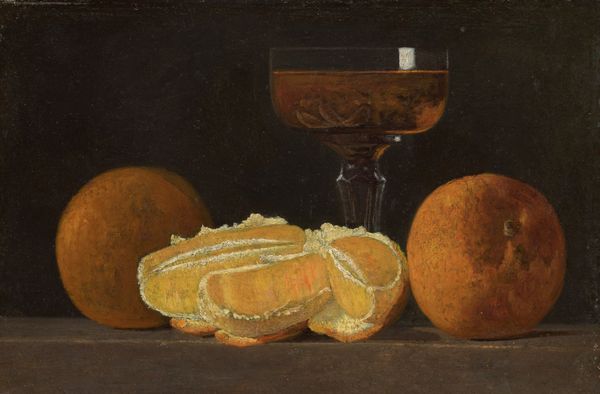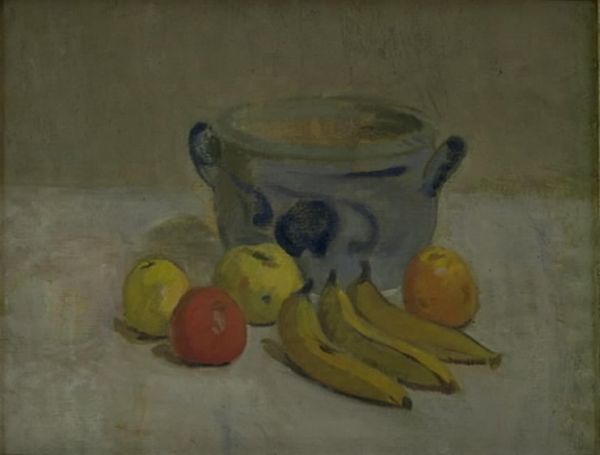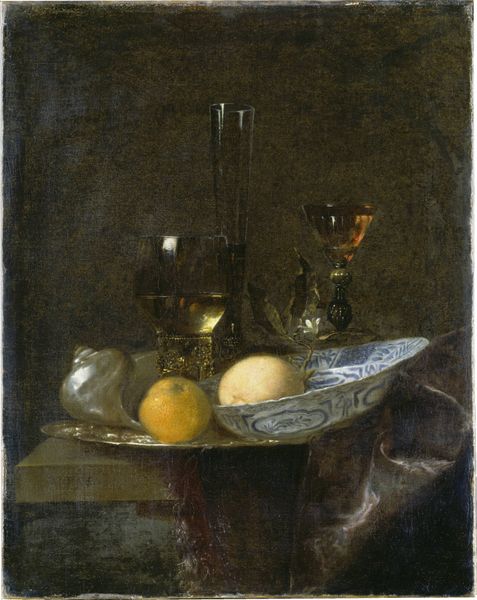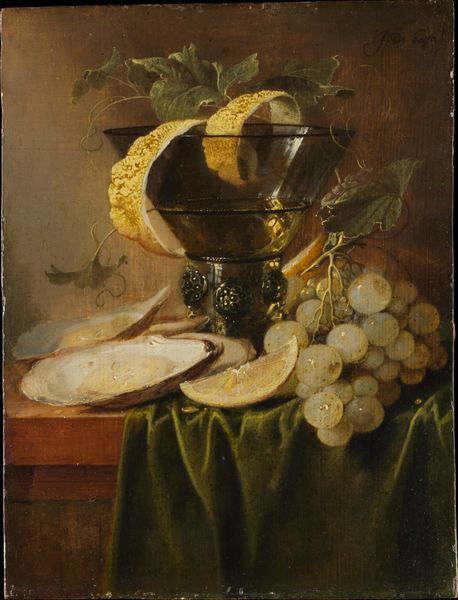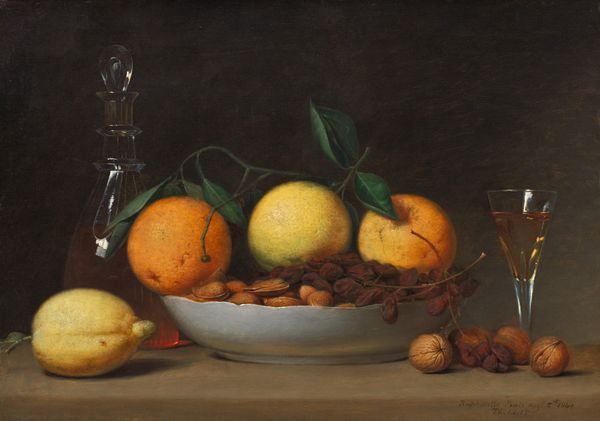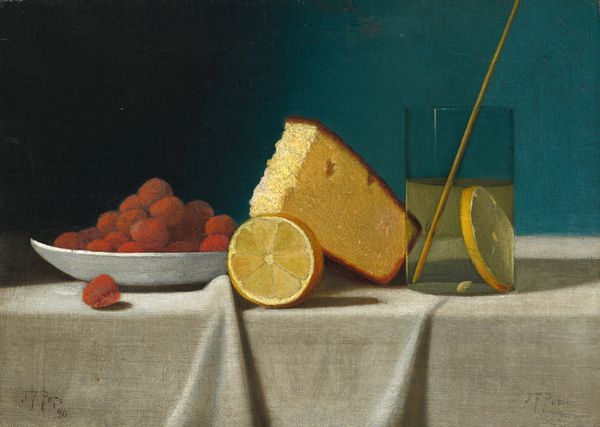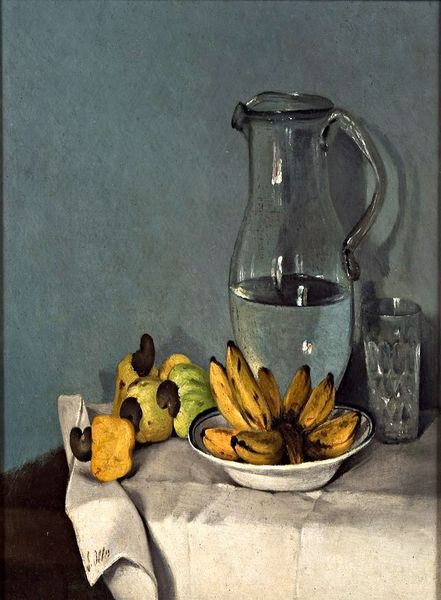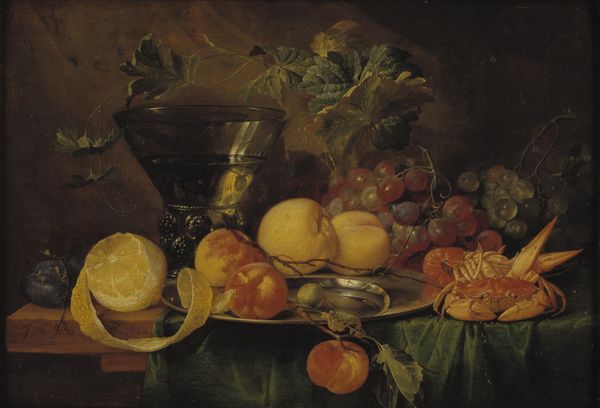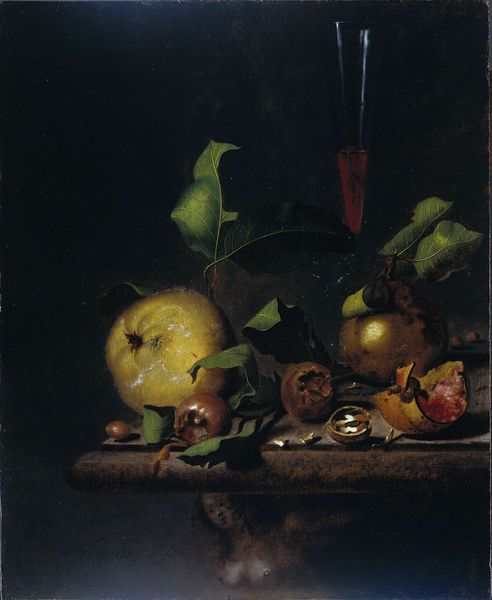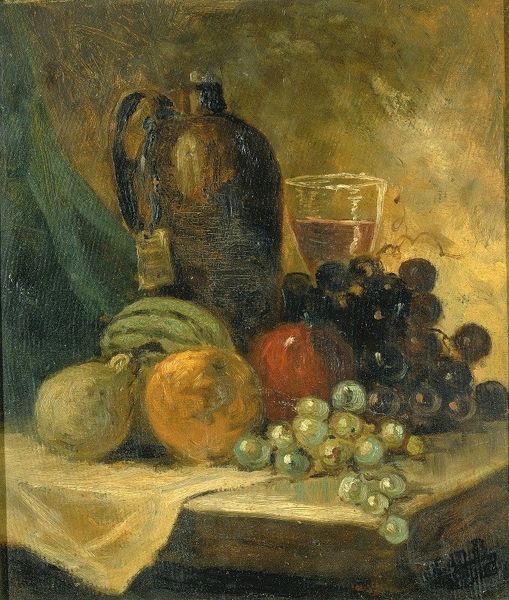
oil-paint
#
oil-paint
#
oil painting
#
romanticism
Dimensions: height 27 cm, width 23 cm, depth 8.2 cm
Copyright: Rijks Museum: Open Domain
Curator: This oil painting from around 1823-1826 is called "Still Life with Lemon and Cut Glass" and was created by Maria Margaretha van Os. Editor: There’s a curious tension. The cut glass and vivid yellow of the lemon say luxury, perhaps even decadence, but the composition is so tightly cropped, and the color palette, except for the lemon itself, so subdued. It hints at restraint, doesn’t it? Curator: It absolutely speaks to a controlled societal framework, yes. Still life paintings during this era, especially those rendered with such meticulous detail, often functioned as coded messages about wealth, morality, and social status. The presence of a lemon, frequently imported and relatively expensive, signifies prosperity. Consider who has access to such luxuries. Editor: The butterfly, too, doesn't it? Emerging perhaps, finding new beauty or freedom? It adds a layer to what might have just been read as an object study or domestic scene, maybe pointing towards self actualization. Curator: Absolutely. The butterfly and the cut lemon act in contrast, however, the objects signify how far one is, yet, from achieving personal or economic stability in a colonial framework. These images serve, both today and when this was originally painted, as ways to negotiate how femininity operates in our public and private spheres. It suggests that, while beautiful objects might provide temporary escape, true freedom remains out of reach for marginalized peoples. Editor: I hadn't considered that specifically, but it tracks, especially knowing the societal structures within the time the painting was made. What’s interesting, too, is that Van Os was a woman, a woman creating commentary, both with, and against, accepted visual culture of the day. Curator: Precisely! This brings another layer of meaning to this canvas and makes us question whose perspective are we encountering when we look at objects. What we interpret is through both our lenses and hers. This pushes for visibility of identities that were suppressed throughout modernity and urges us to acknowledge them in contemporary social environments. Editor: It's a remarkable piece, far more complex than a first glance suggests. It demonstrates the ongoing ability of art to make a dialogue through both temporality and history.
Comments
No comments
Be the first to comment and join the conversation on the ultimate creative platform.

